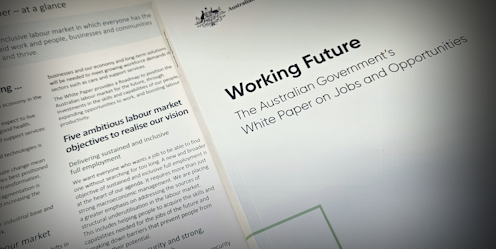1 in 5 Australian workers are either underemployed or out of work: white paper
- Written by John Hawkins, Senior Lecturer, Canberra School of Politics, Economics and Society, University of Canberra

Today’s employment white paper[1] has adopted the broadest-ever definition of what “full employment” means for Australia.
The new paper says closer to 2.8 million Australians are either underemployed or out of work – equivalent to one-fifth of the current workforce. That new estimate is much higher than the official unemployment total of 539,700.
Going further than any of the previous employment white papers over the past 80 years, the new report defines full employment as meaning
everyone who wants a job should be able to find one without searching for too long
While it commits the government to keeping employment as close as possible to the current maximum sustainable level “consistent with low and stable inflation”, it goes further, noting that this measure – the so-called non-accelerating inflation rate of unemployment (NAIRU) – has been falling and is hard to estimate.














